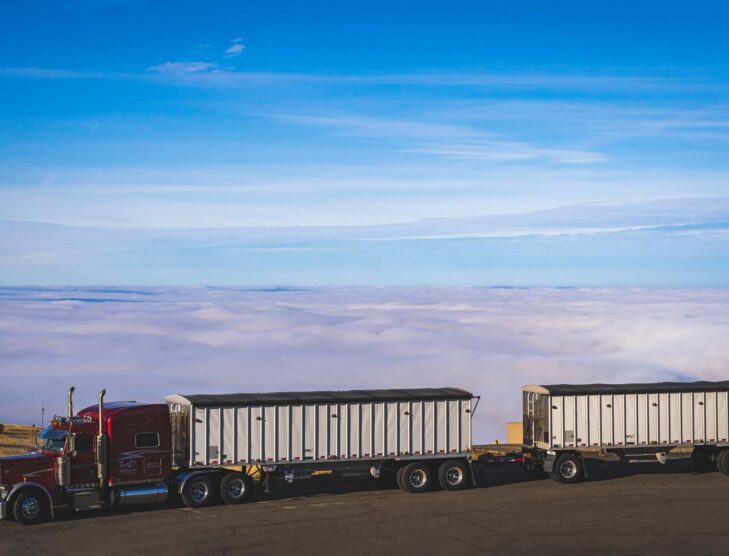
U.S. Court of Appeals exempts trailers from fuel economy rule
The United States Court of Appeals for the District of Columbia Circuit, in a split decision on November 12, ordered the U.S. Environmental Protection Agency (EPA) and the U.S. National Highway Traffic Safety Administration (NHTSA) to vacate all portions of the “Final Rule for Phase 2 Greenhouse Gas Emissions Standards and Fuel Efficiency Standards for Medium- and Heavy-Duty Engines and Vehicles” that apply to trailers.
The EPA and the NHTSA jointly established greenhouse gas emissions and fuel efficiency standards for heavy-duty trailers in 2016. The final rule was published in the U.S. Federal Register on October 25, 2016, and became effective on December 27, 2016.
The regulations applied to two types of trailers: box vans, the most common kind, and non-box trailers, which generally carry freight that will not fit in a box van. Only three types of trailers were subject to the regulations: flatbed and tank trailers and container chassis. For most box vans, regulations required the use of some combination of aerodynamic devices such as side skirts and gap-closing devices, weight reduction strategies, low-rolling resistance tires, and tire pressure systems. For non-box trailers, the regulations required the use of certain low-rolling resistance tires, and tire pressure systems.
The fuel efficiency measures chosen by the final rule draw on those already adopted by a number of trailer manufacturers as part of the voluntary SmartWay Transport Partnership program established by the EPA in 2004. The program encouraged transportation companies, including trailer manufacturers, to take steps to improve fuel efficiency and to reduce greenhouse gas emissions. Between 2004 and 2016 more than 3,000 firms, most of them trucking fleets, participated in the program.
The Truck Trailer Manufacturers Association, Inc., based in Gainesville, Virginia, U.S.A., whose members produce more than 90% of the truck trailers built in the United States, objected to the rule and petitioned the court to review the rule. In 2017, the D.C. Circuit Court granted the association’s motion to stay the EPA’s portion of the rule to the extent it applies to trailers. In 2020, it also stayed the compliance dates in NHTSA’s portion of the rule.
Trailers are not “motor vehicles”
Writing for the majority, Judge John M. Walker, who was appointed to the court by former President Donald Trump in 2020, said that the EPA can only regulate “motor vehicles,” and since trailers have no motor, therefore they are not considered motor vehicles. In addition, neither are trailers “vehicles” when used in the context of a “vehicle’s fuel economy, since motorless vehicles use no fuel.”
“A trailer is the back portion attached to a motorized tractor in the front. Trailers include tanks, car carriers, logging trailers, and platforms.”
“The objects of the EPA’s § 202 Clean Air Act regulations must be self-propelled. Trailers are not self-propelled. Therefore, the EPA cannot use § 202(a)(1) to set emissions standards for trailers and require trailer manufacturers to comply with them.
“Because a trailer uses no fuel, it doesn’t have fuel economy. And in the statutory context of § 32902, nothing is a vehicle unless it has fuel economy — a measure of miles traveled per gallon of fuel used. NHTSA therefore lacked the authority to regulate trailers.”
Dissenting opinion
A lengthy dissenting opinion by Judge Patricia Ann Millett, who was appointed to the court by former President Barack Obama in June 2013, explained that “This case is about the EPA’s and NHTSA’s authority to regulate the trailer portion of a tractor-trailer to improve fuel economy.”
The EPA acted under the Clean Air Act which authorizes the agency to regulate emissions of air pollutants from new motor vehicles. The Clean Air Act defines “motor vehicle” as “any self-propelled vehicle designed for transporting persons or property on a street or highway.” The EPA viewed trailers as falling within that definition.
“Because the trailers are tractor-propelled rather than self-propelled, I agree with the majority opinion’s judgment that the Clean Air Act’s text precludes the particular EPA regulations at issue here. I further agree with the majority opinion that, in seeking to reduce emissions, the EPA could instead regulate the tractors, including the types of trailers they are allowed to pull.”
NHTSA’s authority to issue separate fuel economy regulations
“But when it comes to the question of NHTSA’s authority to issue its separate fuel economy regulations, I part ways with the majority opinion. NHTSA acted under a provision of the Energy Independence and Security Act of 2007 (“Energy Independence Act”) that directed NHTSA to establish fuel efficiency standards for commercial medium- and heavy-duty “on-highway vehicles[.]” 49 U.S.C. § 32902(k)(2). Unlike the Clean Air Act, the Energy Independence Act contains no definition of the term “vehicle” other than regulating it in its on-highway operation and status. Given that focal point, NHTSA quite reasonably applied a long-established definition of vehicles that includes commercial trailers. The majority opinion’s view that NHTSA’s interpretation somehow runs afoul of “plain” non-existent text does not stand up,” she wrote.
Further, she cited a 2014 study by the U.S. National Academy of Sciences, which released the statutorily required fuel economy study preceding the regulations that addressed at length the effect that tractor-trailers (combined tractors and heavy-duty trailers) have on fuel consumption and efficiency. The study determined that the largest tractor-trailers account for 60% of the fuel consumption of all heavy-duty on-highway vehicles, and that regulating the trailer’s design and equipment “could substantially increase overall fuel savings” for the tractor-trailer on the highway.
The EPA calculated that as much as one-third of the potential reduction in tractor-trailer fuel consumption and emissions could be achieved through the regulation of the trailer’s equipment and design alone, she added.









